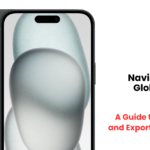
EXIM policy- understanding the key features of india’s EXIM policy
For aspiring exporters and importers, the Indian Export-Import Policy (EXIM Policy) can seem like a labyrinthine document, filled with arcane acronyms and seemingly endless clauses. But fear not, intrepid traders! This beginner’s guide is your Ariadne’s thread, ready to illuminate the key features of the EXIM Policy and guide you on your journey towards international trade success.
First things first, what is the EXIM Policy?
Imagine it as the rulebook for India’s foreign trade, outlining regulations, incentives, and support measures for both exporters and importers. The policy aims to boost India’s international trade, promote diversification, and enhance competitiveness in the global market.
So, what are the essential features of this labyrinthine document?
- Free Trade Agreements (FTAs): These are pacts signed with other countries, reducing or eliminating tariffs and fostering smoother trade flow. Understanding the benefits of specific FTAs relevant to your products is crucial.
- Duty Exemption Schemes: The EXIM Policy offers various duty exemption schemes, like Advance Authorisation Scheme and Duty Drawback Scheme, to reduce your import costs and make your exports more competitive.
- Export Promotion Incentives: From Merchandise Exports from India Scheme (MEIS) to Service Exports from India Scheme (SEIS), the policy provides a range of financial incentives to boost your exports.
- Import Regulations: Importing certain goods might require specific licenses or permissions. Familiarizing yourself with these regulations and procedures is essential to avoid delays and penalties.
- Foreign Trade Zones (FTZs): These designated areas offer duty-free imports and other benefits to attract foreign investment and boost export-oriented manufacturing. Understanding the advantages of operating in an FTZ might be valuable depending on your needs.
- Foreign Exchange Regulations: The policy outlines regulations for foreign exchange transactions related to international trade. Ensuring compliance with these regulations is crucial to avoid legal complications.
But hold on, it’s not just about reading the policy!
Understanding the complexities of the EXIM Policy requires knowledge of various trade-related concepts, from customs documentation to export finance. This is where Lime Institute comes in! We offer comprehensive training programs designed to equip you with the skills and knowledge needed to navigate the world of EXIM with confidence.
Here’s what you can expect from our EXIM training programs:
- Expert Faculty: Learn from seasoned professionals with extensive experience in international trade and the EXIM Policy.
- Interactive Learning: Immerse yourself in case studies, simulations, and practical exercises to solidify your understanding.
- Industry-Specific Focus: Tailor your learning to your specific industry or trade segment for greater relevance.
- Career Guidance: Get personalized advice on career paths in export-import after completing your training.
Remember, mastering the EXIM Policy is not just about understanding the rules, it’s about unlocking immense possibilities. With the right knowledge and guidance, you can leverage the policy’s provisions to:
- Expand your business beyond domestic markets.
- Access lucrative new markets and customer segments.
- Become a key player in global trade.
- Contribute to India’s economic growth and export potential.
So, ditch the fear and embrace the challenge! With Lime Institute by your side, you can transform the EXIM Policy from a labyrinth into a launchpad, propelling your journey towards a rewarding career in the dynamic world of international trade.






